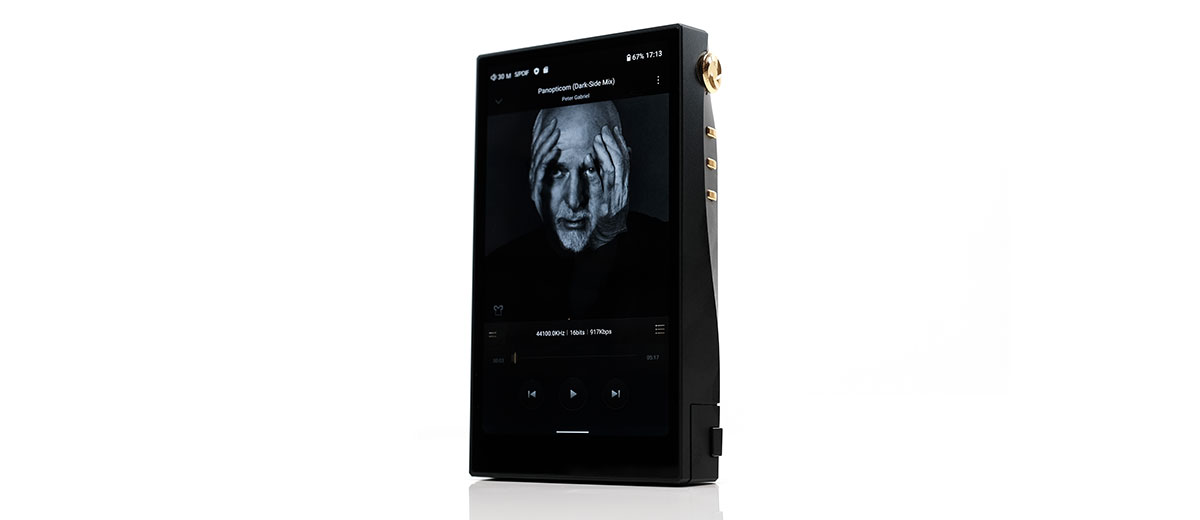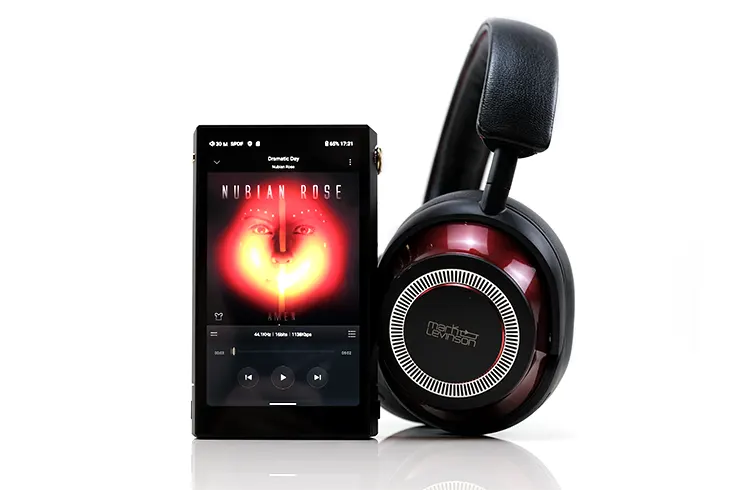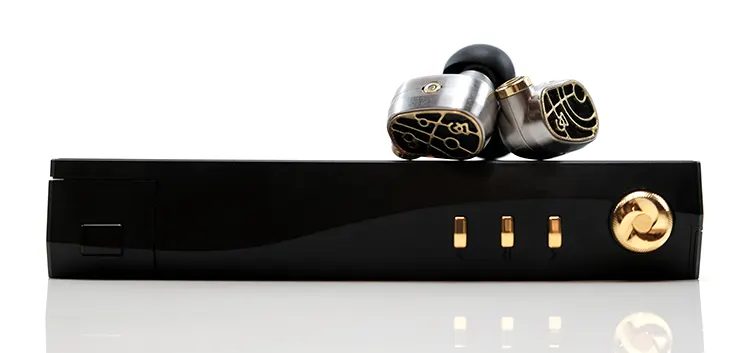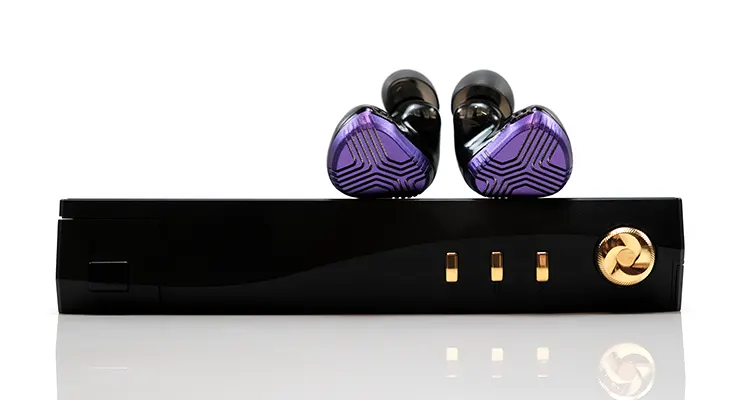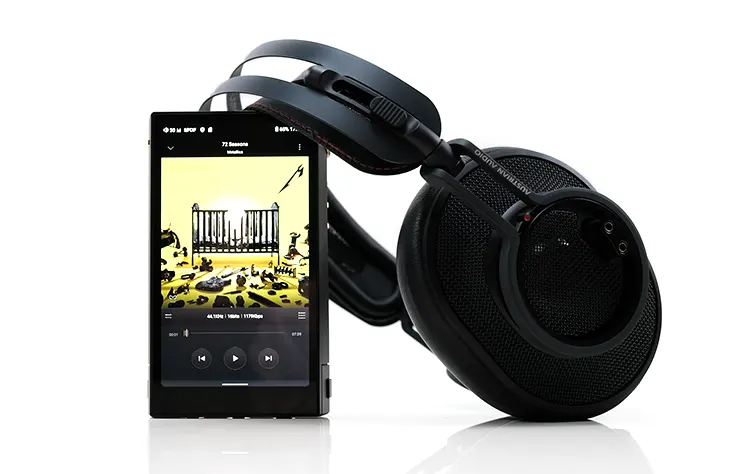Sound Impressions
The following sound impressions of the Cayin N6iii were completed via the balanced 4.4mm output using a mix of the Campfire Audio Solaris Stellar Horizon, Vision Ears EXT MKII, the Empire Ears ESR MKII, and THIEAUDIO’s Monarch’s MKIII.
C201 Summary
I would classify the C201 as a fairly balanced, natural to neutral sounding motherboard with a nice set of punchy lows and plenty of air and width. Almost an everyday motherboard for flexible pairing options, similar to how the A01 was marketed when the N6ii was first launched.
There is nothing too dramatic about its delivery, nothing that overly colors an IEM in one direction or another, save for what I would describe as a very nice and wide imaging experience.
The center imaging sits back a bit, enhancing a stronger perception of distance from the listener to the artist. That works well with soundstage specialists like the PMG Audio Apx and the detail-orientated reference tuned ESR MKII.
I also found it capable of digging out some much-needed air, creating a more defined and cleaner set of mids over the E203 with the high-end Camerton Binom-ER headphones.
However, with more closed-back headphones such as the ZMF Headphones BOKEH, you might interpret the lighter-touch set of mids from the C021/N6iii as a little hollow and lacking in substance. The BOKEH needs density and body to sound at its best, something for which the E203 pairs better.
The resolution is excellent, particularly in the highs teasing out some excellent articulation and headroom from the EXT MKII and the Stellar Horizon IEMs.
This is backed up by a well-defined, punchier mid-bass performance, one that might lack the richness of the E203 sub-bass weight, but switched into high gain, it delivers a very well-tuned and speedy response well suited to synthwave and fast BPM dance recordings.
The background noise is also super-low and black with excellent channel balancing and a fairly linear volume curve, making it a sound choice for sensitive IEM users.
E203 Summary
The N6iii/E203 has three different sound signatures, but as the saying goes, “all roads lead to Rome,” and honestly, that is the case here, with its “Hyper Mode” option standing tall over Class A and Class AB.
That said, compared to the C201, all modes sound denser, with a more immediate and aggressive sound signature, stretching the stage front to back with some excellent depth and vocal timbre.
Of the two debut motherboards, this is the more dynamic and nuanced performer, and with the Hyper Mode, the most vibrant and gut-wrenching, especially with hybrid IEMs with a decent dynamic driver for the lows.
What it might lack is the same staging width and degree of airiness of C021. I don’t find it quite as expansive as the stock motherboard, but in return, I get a much stiffer spine with a vastly enhanced bass fundamental and a bit more analog smoothness coming through.
Class A
With Class A, you will find the E203 at its most relaxed relative to Class AB and Hyper Mode.
The sub-bass is more authoritative relative to the C201/N6iii pairing, so even though the aggression in the highs and slightly dipper mids presence creates a more ‘gentile’ presentation, I still find the overall coloration to the firmer and denser side.
Class A works best with mid-forward IEMs, which either come across as a bit too shouty or lean and spikey through the upper mids. The non-fatiguing vocal timbre can be gorgeous at times.
Relatively clean sounding monitors such as the Stellar Horizon and the ESR MK gelled particularly well with Class A, delivering a smooth and agreeable set of mids and highs.
Class AB
Save for its tight and taut performance with the bass-heavy EXT MKII, the Class AB was my least favored mode on the E203.
It’s a slightly jarring leaner sound with neutral to bright IEMs, though its tighter bass delivery and mid-bass punch carry it well with faster-paced, high-energy EDM and more ethereal recordings where clarity in the highs is required.
Hyper Mode
Hyper Mode gives you the best of both worlds and is the mode I have on by default now. It’s tighter but deeper and more aggressive on the lows, with more urgency than Class A.
It also has far superior layering and a fuller midrange delivery than Class AB, with vocal imaging that bit closer and more immediate than any other motherboard presentation available right now.
Almost every IEM came alive with aplomb, teasing out a childlike smile as I tested each one out. A real joy to use.
Synergy
Noise Floor
Between the two motherboards, the C201 has the blacker background with a lower noise floor when using super sensitive IEMs such as the Campfire Audio Andromeda.
With the more recent Solaris Stellar Horizon, there was a very faint level of hiss going from the E203 balanced out in a low gain setting, but this dropped to barely audible using its single-ended output.
I found that some IEMs did need a bump to a higher gain stage with both cards if you wanted to keep the volume to a relatively modest level.
Demanding IEMs such as the Vision Ears EXT MKII sounded great on a high gain, especially with E203’s Hyper Mode with the bonus of a relatively quiet noise floor during playback.
Volume control and channel balancing on low volume levels are excellent on both cards and an improvement on the N6ii and its motherboards such as the R01.
I also found the E203 volume and gain setting relationship to have a little more finesse with sensitive IEMs than the C201, with a more granular and linear incremental increase from zero upwards.
What got me smiling is the cross-motherboard volume level memory retention. This means that if you set the volume of one card to a certain level, move to another card, and then go back again, the N6iii will remember the level you set previously and switch to it automatically.
Both PO outputs of the C201 and the E203 motherboards range from 1Ω balanced (C201) down to 0.4Ω unbalanced (E203), so there should be no concerns about the potential for impedance skew from some sensitive drivers.
IEM Pairings
I tested both cards with four IEMs ranging from the all-BA driver Empire Ears ESR MKII, two high-end hybrids, the Campfire Audio Solaris Stellar Horizon and the Vision Ears EXT MKII, and the summit-fi PMG Audio Apx.
I found the C201 offered a balanced ‘everyday sound’ with all paired IEMs, an all-rounder if you will, without one particular aspect standing out over the other.
If anything, it has a slightly more precise presentation than the E203 and a bit more treble energy. IEMs such as the Stellar Horizon and the ESR MKII sounded evenly toned with good vocal presence.
There is also some underlying warmth from the C201/N6iii bass response to keep the tonal quality more to the natural than the bright side.
The E203, however, is the card you want for a lot of these IEM pairings, especially with the hybrid monitors I tested when using Hyper Mode.
Class A is ideal for smoothing out shouty mids and peaky highs or adding some smoothness to IEMs such as the Stellar Horizon.
I was less enamored with the leaner, edgier Class AB response with the Stellar Horizon, but it did introduce some welcome definition and punch with the EXT MKII.
The E203 Hyper Mode is a game changer. It’s like adding several layers of mixes into the recordings, with everything sounding more powerful and vibrant in their delivery.
Especially through the mids with the Stellar Horizon and the Apx, with a richer, firmer sound compared to Class AB and a more forward, energetic delivery over Class A.
As a side observation, I also found that lowering the N6iii volume and switching to a high gain setting offered a tauter, more dynamic bass response from those hybrid IEMs, such as the EXT MKII.
Headphone Pairings
I thought the headphones pairings were more revealing for the N6iii motherboard preferences than the IEMs.
With the IEMs, you could use the C201 for pretty much any pairing and carry on just fine, but with the headphones, there were some definite ‘no and yes’ for my tastes.
For example, the N6iii/C201 pairing with the ZMF Headphones BOKEH sounded hollow and flat compared to the voluptuous and denser sound of the E203 hyper mode.
The C201 was much too polite for my tastes, whereas the N6iii/E201 delivered more convincing bass power and firmer, more vibrant vocal performances.
On the flip side, the E203 was a difficult pairing with the darker Camerton Binom-ER. It seemed to struggle to deliver the necessary treble sparkle and air needed for it to shine, sounding too congested with dominant lows.
The C201 reduced the bass bloom, added some improved height and treble contrast, and widened the soundstage, creating a more defined and open sound with the Binom-ER.
I would pick the Hyper mode with the Dan Clark Audio NOIRE X and the Austrian Audio Composer. Both have some sparkle up top and benefit from the smoother, more natural sound of the E203.
The Hyper Mode bass weight and richer, more intimate vocal performances also play well with the Composer and deliver a more natural tone to the NOIRE X.
If the vocal forwardness is too much on the NOIRE X, then the E203 Class A mode delivers a more relaxed, soothing sound, though I didn’t feel that to be the case with the Composer leaving Hyper Mode on for almost everything.

